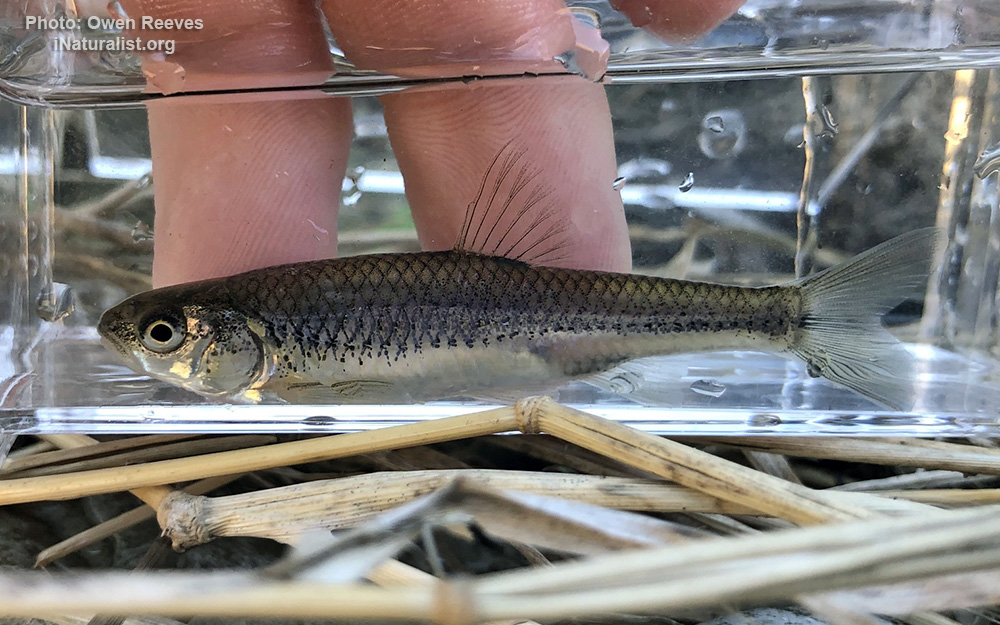Sand shiner
(Notropis stramineus)

Classification
General data
The sand shiner (Notropis stramineus) is a widespread North American species of freshwater fish. Sand shiners live in open clear water streams with sandy bottoms where they feed in schools on aquatic and terrestrial insects, bottom ooze and diatoms.
Distribution
The sand shiner is extremely widespread, known from central part of the United States and southern Canada. The range stretches from Saint Lawrence-Great Lakes, Hudson Bay and Mississippi River basins which are part of the St. Lawrence River in Quebec to Saskatchewan in Canada. The range also stretches south to Tennessee and Texas; west to Montana, Wyoming, Colorado and New Mexico; Trinity River to Rio Grande in Texas and New Mexico, and Mexico.
Physical characteristics
Sand shiners have a compressed, slender body covered in leptoid scales, more specifically cycloid scales which are generally round and lack a tooth-like cteni. They have a subterminal mouth position (the end of the snout projects only slightly past the mouth) and a homocercal tail (the vertebral column does not enter the caudal fin). Sand Shiners usually have seven anal soft rays, fewer than 10 dorsal fin soft rays, and fewer than 45 lateral line scales. They have no spinous rays meaning none of their rays are hard. Their pharyngeal teeth count is 0,4-4,0
The average total length of a Sand Shiner is about 44 mm with a maximum length of approximately 82 mm.
They have a silvery head and sides with a dark middorsal strip extending to the dorsal fin. At the base of the dorsal fin are two distinct black dashes separated by a clear space when viewed from above. Their back scales are an olivaceous color and are outlined with melanophores. Each pore within the lateral line system, is also accented with paired melanophores which creates the appearance of a thin midlateral strip. The abdomen is a whitish color with indistinct spots at the base of the caudal fin. During spawning, colors intensify in males.











